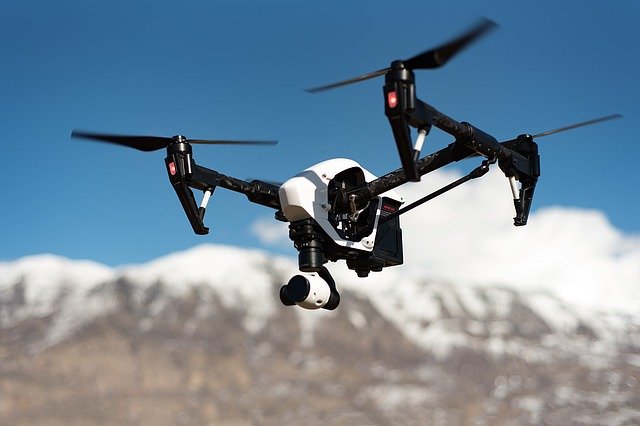One means of transportation that has emerged as the champion for safe and efficient future transport are drones. The Indian government has been quick to realize the immense potential for drone operations and had begun implementation of a legal framework for the same as far back as 2018, making the use of drones in India legal for a number of purposes. However, this industry is in a very nascent stage and by nature is one that evolves rapidly with advancements in technology.
The functioning of drones and advancements in the production has exposed a number of missing links in the policy and legal framework and thus a new set of Draft Unmanned Aircraft System Rules, 2020 (Draft UAS Rules) were introduced by the Ministry of Civil Aviation (MoCA) in June 2020. The question that arises is whether these regulations aid in the process of drone production and usage or significantly hamper it.
These draft UAS rules certainly take a huge leap in drone regulations as they now extend not just to those UAS within the territory of India but to all that are registered in India. The new rules also extended the classification from just Remotely Piloted Aircraft Systems (RPAS) and model RPAS to include a third category, namely autonomous UAS. These are categorised on the basis of weight into 5 categories:
- Nano: Less than or equal to 250 grams
- Micro: From 250 grams to 2kg
- Small: From 2kg to 25kg
- Medium: From 25kg to 150kg
- Large: Greater than 150kg
Drones in all categories, except Nano, require registration. The part where the new rules significantly depart from the earlier ones is the area of authorization. All persons associated with the drone ecosystem (i.e. Manufacturer, importer, trader, owner, or operator) require authorisation which has to be applied through the government’s DigitalSky platform. Upon authorization the person would receive a Unique Authorisation Number which would be valid for 5 years, unless revoked/suspended. The caveat is that the said authorisation can be obtained only by an Indian national or an organization whose majority stakeholders are Indian nationals. This, in effect, significantly discourages participation by foreign players in India’s market.
Additionally the manufacturer of the UAS is required to comply with certain design standards set by the Directorate General of Civil Aviation (DCGA), such as GPS, Return-to-home, Anti-collision light, ID plate, a flight controller with flight data logging capability, and No Permission No Take-off (NPNT). The NPNT is a system included within the DigitalSky platform which requires the drone pilot to request clearance every time before take-off, without which the drone would simply not be able to take-off.
The inclusion of the third category of UAS, namely the autonomous UAS, is a much appreciated and forward looking measure. This addition allows the application of Drone systems that follow a predetermined route and operate Beyond Visual Line of Sight (BVLS) subject to a proof of concept clearance by DCGA. This move would lead to a significant boost in UAS-based commercial activities and enhance operations. The central government, according to these rules, has the authority to establish Unmanned Aircraft Traffic Management System (UTM) in the Indian airspace to facilitate UAS operations. This also enables it to create a drone corridor, which is a segregated airspace for operation of UAS. However, there is no provision that specifies the requirements to be met to establish a drone corridor.
The disregard of any of the rules laid down in Draft UAS Rules, 2020 can lead to a penalty which can involve a suspension of the authorisation of those found guilty and can lead to a maximum imprisonment period of two years or fine of maximum one lakh Rupees depending on the degree of the crime.
While these new rules significantly expand the scope of UAS operations and exhibit a forward looking vision, they still leave certain important questions and concerns unattended. Concerns of privacy and data collection (either by individuals or the government) have not been addressed in these regulations and no structure for redressal for such issues has been set up.
The Draft UAS Rules fail to lay down the definition of ‘components’, which may include both hardware and software elements of a UAS. The restriction of foreign players in such a situation where the domestic industry is heavily reliant on import of both hardware and software from other countries can have a detrimental impact on the growth of this infant industry. As mentioned before the authorizations required for drone manufacturing can be obtained only by an Indian national or an organization whose majority stakeholders are Indian nationals, this discourages foreign industry leaders to make significant inroads in the Indian drone industry as the policy tips slightly in favour of Indian manufacturers. While this protectionist move might help build up the capacity of the Indian manufacturers, it might slow the technological advancements in this field as the Indian industry is not only heavily reliant on imports for drone parts but also for research and development in the field. Further, these laws require multiple certifications- for both, individual spare parts and the final drone. Some parts (such as propellers, batteries, motors/rotors etc.) required in production of drones might have uses in other industries and thus bring up an ambiguity on whether the UAS rules would be applied to them. It appears that the new policy that has been proposed is clearly lacking in some critical dimensions.
While making the Indian airspace more “Drone-friendly” it is important to steer clear of over-regulation of the marketplace making it difficult for stakeholders to easily produce and operate drones.
Read more: The story of a budget private school owner from India
Post Disclaimer
The opinions expressed in this essay are those of the authors. They do not purport to reflect the opinions or views of CCS.






